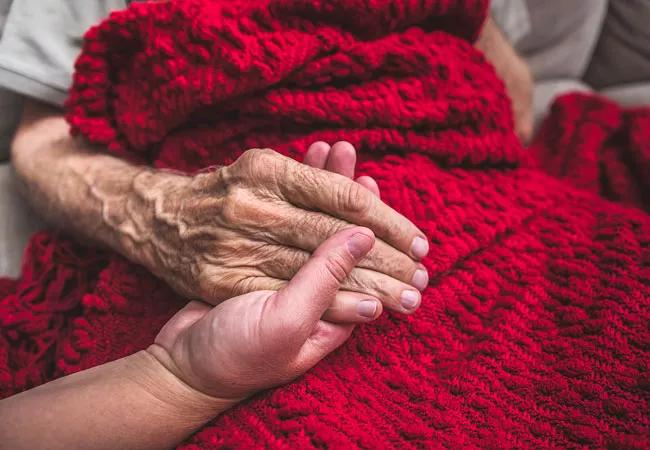A Q&A with Laura Shoemaker, DO

Dr. Shoemaker: First, I wish physicians appreciated how much patients want their doctors to start the conversation. Doing so does not dash hope or create anxiety. Instead, initiating the conversation demonstrates sincere interest and respect. It can lead to better outcomes and lessen family stress near the end of life.
Advertisement
Cleveland Clinic is a non-profit academic medical center. Advertising on our site helps support our mission. We do not endorse non-Cleveland Clinic products or services. Policy
Second, “the conversation” is the essential piece of advance care planning. Completing documents without the associated meaningful conversations with loved ones falls short of the goal. The Conversation Project website is a fantastic help! My family used it and I refer my patients there regularly after I’ve initiated the conversation in my clinic.
Dr. Shoemaker: Most healthcare professionals do understand that there is a difference and want to guide patients appropriately, but because they don’t totally get the difference, I hear things like “this patient is not ready for palliative care” or “this patient is ‘going palliative’ instead of hospice.”
Palliative care is appropriate for any patient suffering with serious illness, regardless of age or stage. The goal is to improve quality of life for both the patient and the family. Palliative care is provided by a specially trained team of doctors, nurses and other specialists who work together with a patient’s other doctors to provide an extra layer of support. It can be provided along with curative treatment.
If you ask most patients and families if they would like additional support from a doctor or nurse who specializes in improving their quality of life while they live with the physical, emotional and spiritual burdens of serious illness, most will say yes. Hospice, which falls under the umbrella of palliative care, is conservative, comfort-focused care for patients with a life-limiting disease and a prognosis of months or less.
Advertisement
Dr. Shoemaker: I talk with patients and families every day about their care goals and preferences, but when it comes to family, I sometimes find myself tongue-tied. Last fall Ellen Goodman came to Cleveland to discuss the The Conversation Project. I went with my parents and this gave us the stimulus and tools we needed to turn abstract conversations into concrete ones. We had our best conversation in the car on the way home. We then included my brother in the conversations during Thanksgiving, and now the advance directive paperwork is done too.
Dr. Shoemaker: Because it is a place where I feel confident bringing my own family for care. It feels good to work among colleagues practicing at the top of their fields. Cleveland Clinic is an extremely collegial place, where staff go out of their way to help patients and co-workers.
Dr. Shoemaker: I love competitive sports. I play tennis and softball, as well as I can at this age, and enjoy almost any spectator sport, including college football (Go Blue!), professional football, basketball and baseball. I’m pretty loyal to Cleveland teams.
Dr. Shoemaker: Spend a little more time in the moment.
Advertisement
Advertisement

Bispecific antibody bridging therapy deepens durability of BCMA CAR T-cell therapy without overlapping toxicities in patients with relapsed/refractory multiple myeloma

Phase 2 study brings pivotal advances in treatment efficacy and safety for the most challenging-to-treat population

Patient with quadruple refractory multiple myeloma achieves complete response with cell therapy

Distinct baseline immune profiles can predict response and resistance to different types of CAR-T cells.

National Blood Clot Alliance collaborates with faith-based organizations on first-of-its-kind church bus tour

AI-driven tools can streamline enrollment and improve efficiency across clinical trials.

Patient achieves complete remission from aggressive marginal zone lymphoma with liso-cel

Supporting patients during pregnancy and beyond